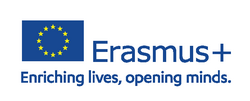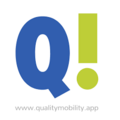Collection: Erasmus+ and other EU Resources
Distance Calculator
for Erasmus + projects
onlineProject Results Database
of the Erasmus+ programme
onlineDesign & Style
Guidance regarding the visual identity
onlineMobility Tool
Access via the EU Login
onlineProgramme Guide
Central page of the Commission
onlineCalls for proposals
at the Commission's tender and funds website
onlineNational Agencies
Overview on the programme's website
onlineEuropean Central Bank
Exchange Rates
onlineQ!App
Collaborative project concept development online by European Platform for Learning Mobility (EPLM)
Q!AppEuropass
Platform for the European CV and other work and learning relöated tools
onlineYouthpass
Recognition tool for non-formal & informal learning in youth projects
onlineEPALE
Electronic Platform for Adult Learning in Europe
onlineSALTO Toolbox
online
Planning and Grant Application
The programme calls are like all other European calls published on the Tender and Funds website of the European Commission. All information about the programme itself is provided on the programme website: Erasmus+ official website.
After having registered at the EU Portal and chosen for what concrete programme line you want to apply, you might start writing your application online. Most calls in Erasmus+ are managed by National Agencies, Erasmus+ agencies on national level, also providing assistance to applicants in their language.
In particular, you have to read through the Programme Guide again and again, which describes specifically what is funded, in what amount and under what conditions. It is updated with each new call for proposals, so that individual things can also change between the call years. However, once a project has been successfully approved, the program guide that was valid when the application was submitted applies.
Management
Some special things you need in the implementation. For example, the Distance Calculator helps determine the amount you can reimburse people for their travel. Or you need to find out how to correctly place the program's logo and wording in materials. Maybe a participant asks for an entry in Youthpass so they can later prove their successful participation? Below we have collected these tools as well.
Interim and final reports as well as settlements are entered into an online mask, the Mobility Tool. It is accessed via a central EU Login Platform.
In addition, one must also keep in mind that participant lists must contain different data for different activities. Some National Agencies offer templates here, others do not. Therefore it is worthwhile to have a look at the website of the National Agency or consult your reposible project officer, but there is no central page with templates. Otherwise, the exact information on what must be proven and how, so that it is later successfully accounted for, can be found in the conditions of approval, which are attached to the grant contract as an appendix.
Documentation and Sharing
While many reports are simply entered in the Mobility Tool, there is also an emphasis on publishing project results in the Erasmus Plus Result Database (such as a handbook, website or papers).
This applies as far as the reporting and publication obligations required by the program are concerned. In addition, it is also useful for many projects to disseminate their results on a voluntary basis. For example, one can think about an article for EPALE, the platform for adult education. Or one publishes a good product, which can be interesting for other trainers, in the SALTO Toolbox. Or on Competendo.









